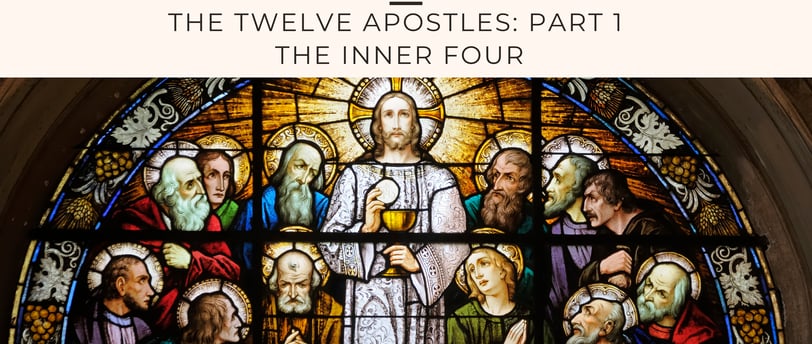The Twelve Apostles: Part 1 – The Inner Four
An introduction to Peter, Andrew, James the Greater, and John.
SAINTSHISTORY
6/24/20253 min read


Among the Twelve Apostles, four men stand out as the innermost circle of Jesus’ companions:
Peter
Andrew
James the Greater
John
These men witnessed the most intimate and miraculous moments of Christ’s ministry. Their lives offer us powerful examples of faith, transformation, and sacrifice.
Peter (Simon Peter)
Simon, later called Peter, was a fisherman from Bethsaida, brother to Andrew. He met Jesus on the shores of Galilee, where the Lord called him to leave his nets and follow Him. Christ later changed his name to Peter, meaning “rock,” and declared, “Upon this rock I will build my Church” (Matthew 16:18). Peter was bold and impulsive—he walked on water toward Jesus but began to sink when fear overtook him. He professed Jesus as the Christ, yet denied Him three times during the Passion. After the Resurrection, Peter’s repentance and renewal were evident as Christ entrusted him with the care of His flock.
Peter preached in Jerusalem and eventually in Rome, where he became the first Bishop—what we now call the pope. According to ancient tradition, he was martyred under Emperor Nero, crucified upside down because he felt unworthy to die in the same manner as his Savior. Saint Peter remains a towering figure, not because he was perfect, but because he was faithful, repentant, and entirely given over to the mission Christ entrusted to him.
Andrew
Andrew, the brother of Peter, was also a fisherman and one of the first to follow Jesus. Originally a disciple of John the Baptist, Andrew recognized Jesus as the Messiah after John called Him the “Lamb of God.” He immediately went to find his brother Peter, saying, “We have found the Messiah!” (John 1:41). His willingness to bring others to Christ would mark his life and mission.
Andrew is known for his missionary zeal. Tradition holds that he preached in regions stretching from Scythia (modern-day Russia and Ukraine) to Greece. In Patras, Greece, he was arrested for spreading the Gospel. Refusing to renounce Christ, he was sentenced to death. He requested to be crucified on an X-shaped cross, not deeming himself worthy to die on a cross like Jesus. Even from the cross, Andrew preached to those gathered, encouraging them to believe in Christ. He died after two days of suffering. Today, Andrew is a powerful model of evangelization and courage in the face of persecution.
James the Greater
James, the son of Zebedee and older brother of John, was among the first disciples called by Jesus. A fisherman like Peter and Andrew, he left everything to follow Christ. Along with Peter and John, James witnessed key moments such as the raising of Jairus’ daughter, the Transfiguration, and the agony in the Garden of Gethsemane. His fiery temperament led Jesus to nickname him and his brother “Boanerges,” meaning “Sons of Thunder” (Mark 3:17).
After Christ’s Ascension, James continued preaching in Jerusalem. According to Spanish tradition, he also journeyed to the Iberian Peninsula (modern-day Spain). He returned to Jerusalem, where he became the first Apostle to be martyred. Herod Agrippa I ordered his execution by sword around AD 44 (Acts 12:2). His remains are believed to rest in Santiago de Compostela, a major pilgrimage site. James the Greater reminds us of the call to witness with boldness and, if necessary, with our very lives.
John
John, the younger brother of James and son of Zebedee, is known as “the beloved disciple.” He was present at the most sacred events in Jesus’ life, including the Last Supper, the Crucifixion, and the Resurrection. He alone of the Apostles remained with Jesus at the foot of the Cross. From the Cross, Jesus entrusted His Mother Mary to John’s care, symbolizing both trust and spiritual kinship.
John authored the Gospel that bears his name, as well as three epistles and the apocalyptic Book of Revelation. He emphasized love, truth, and eternal life, portraying Jesus as the divine Word made flesh. After the Resurrection, John led the Church in Ephesus and was eventually exiled to the island of Patmos, where he received the vision recorded in Revelation. He died of natural causes in Ephesus, the only Apostle not to suffer martyrdom. John’s legacy is that of deep love, mystical insight, and enduring fidelity.
Faith
Sharing God's grace with joy and kindness.
Grace
© 2025. All rights reserved.
